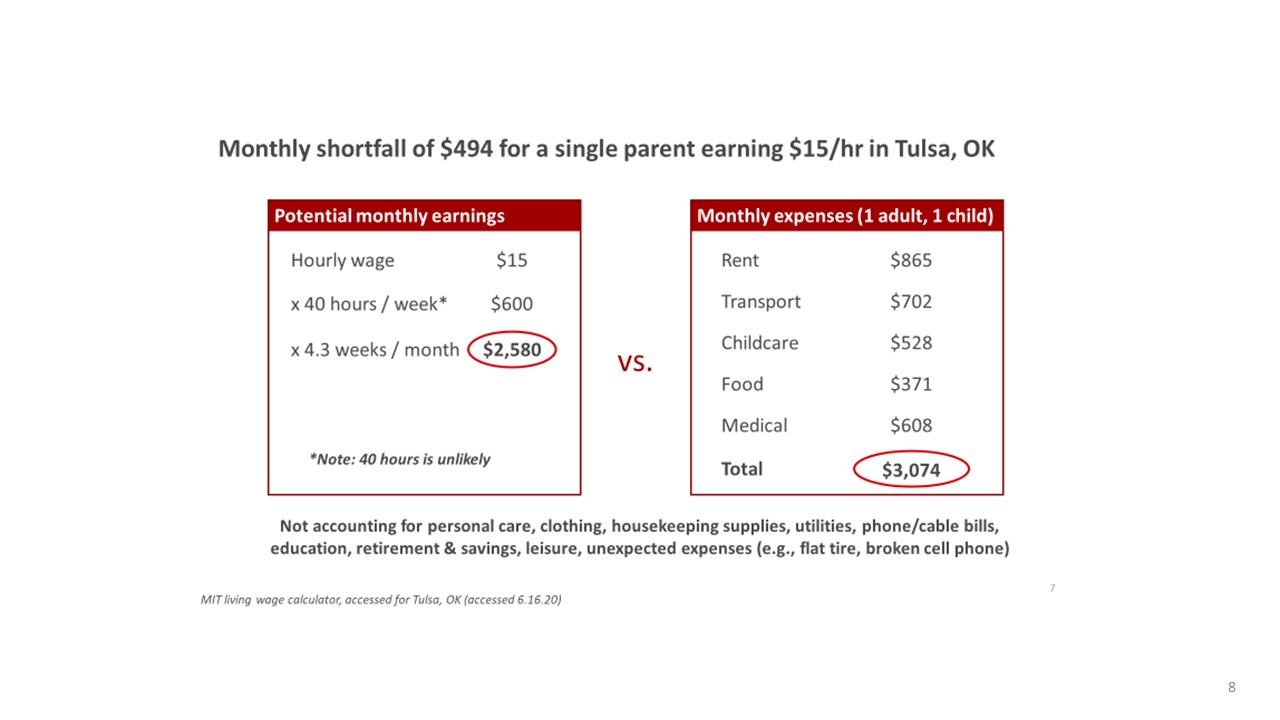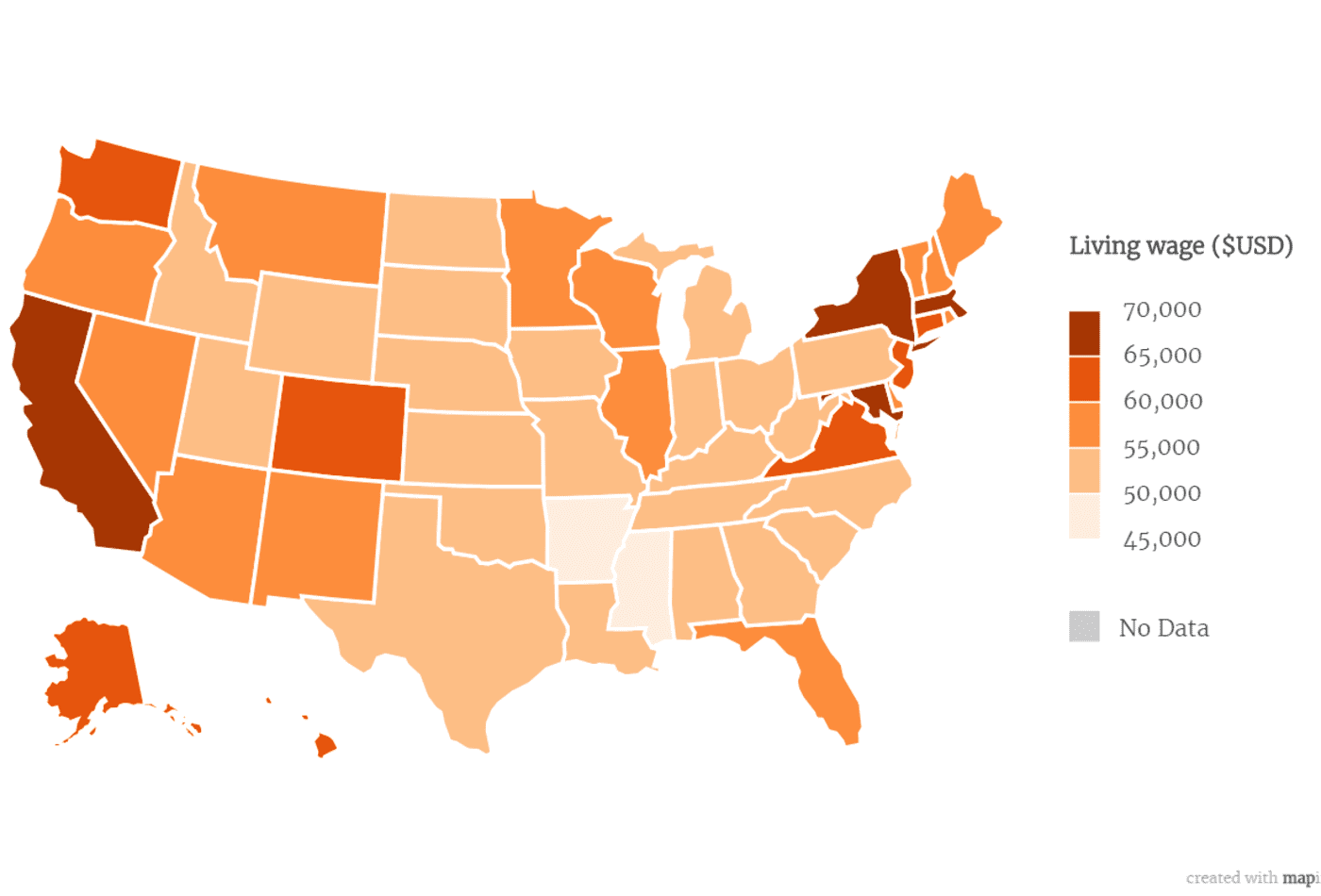The MIT Living Wage Calculator uses a family’s likely minimum costs for food, childcare, health insurance, housing, transportation, and other basic necessities (e.g. clothing, personal care items) to determine the minimum earnings necessary to meet a family’s basic needs while also maintaining self-sufficiency. For instance, the calculator provides just $8.25 a day per adult for food in Tulsa, OK.
The calculator does not account for common expenses, such as cell phones, cable, take out or restaurant meals, entertainment. It also does not include any leisure time: the wage is calculated using 40 hours a week, 52 days a year of work.
Critically, it also does not allow for any savings of any kind (for instance, for emergencies, retirement, college), making it hard for anyone earning a living wage to reach financial stability—making this, as the authors call it, a “minimum subsistence wage”.
That said, the living wage is critical for companies to understand and measure if they want to reduce employee financial precarity. Even wages that may seem adequate may not cover expenses.
"The living wage is the minimum income standard that, if met, draws a very fine line between the financial independence of the working poor and the need to seek out public assistance or suffer consistent and severe housing and food insecurity. In light of this fact, the living wage is perhaps better defined as a minimum subsistence wage for persons living in the United States." -MIT Living Wage Calculator website




